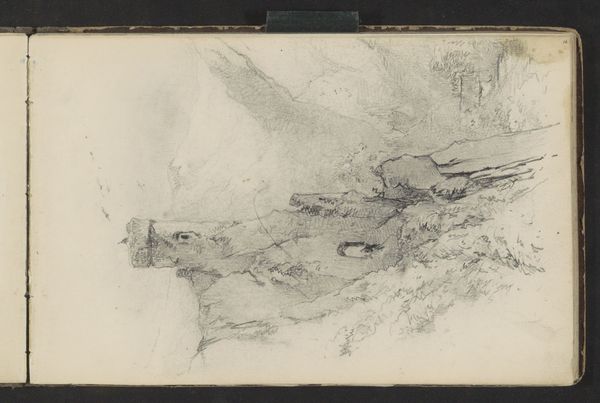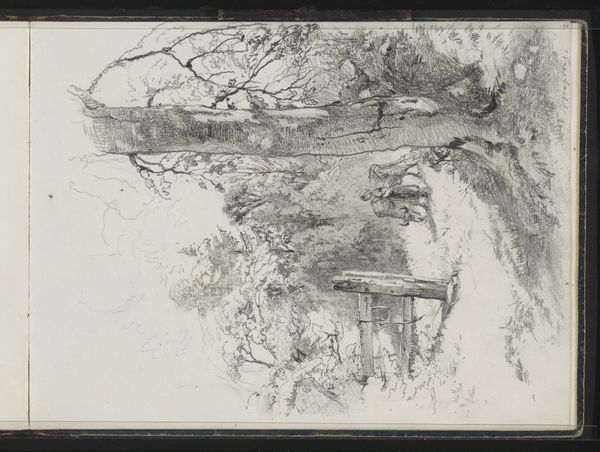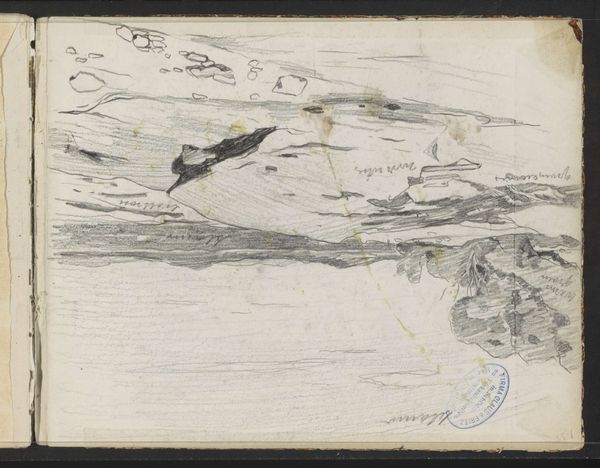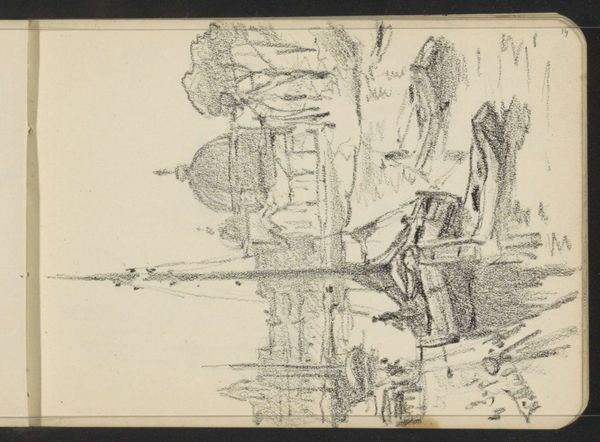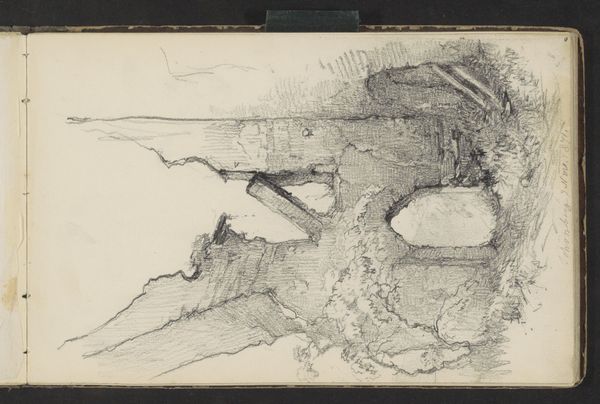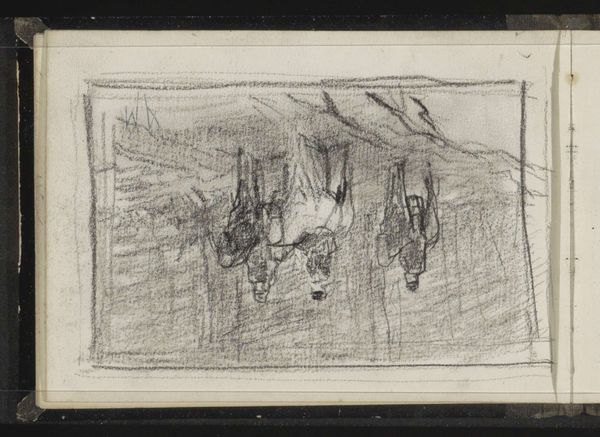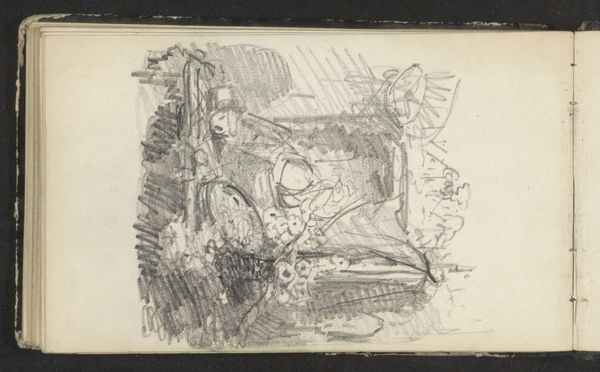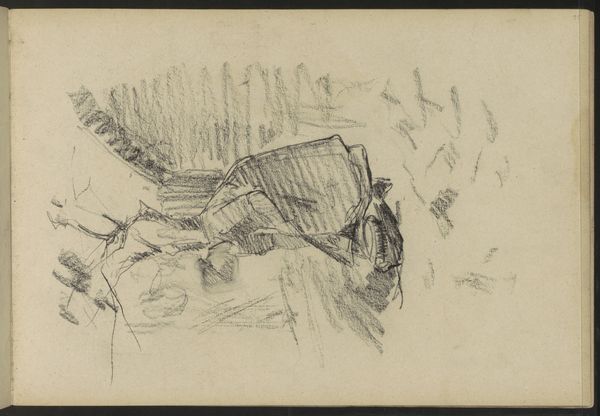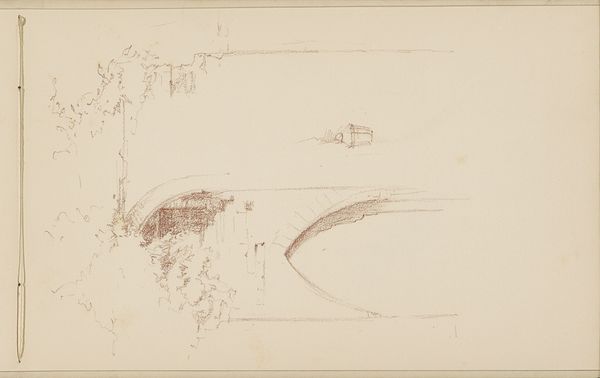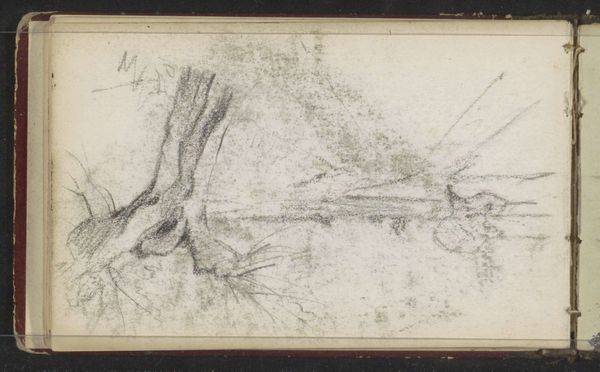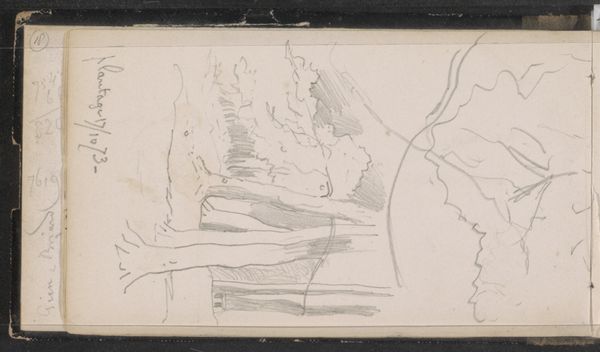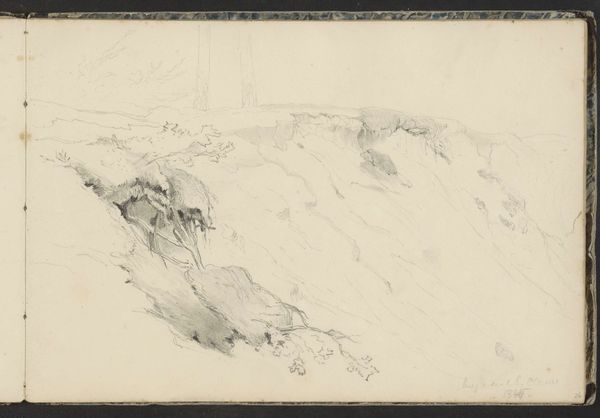
drawing, paper, ink
#
drawing
#
impressionism
#
landscape
#
paper
#
ink
Copyright: Rijks Museum: Open Domain
Editor: So, this ink drawing, "Bomen in De Vuursche" by Maria Vos, created in 1878, captures a landscape in the style of Impressionism, at least from what I’ve been reading. The dense hatching creates a sense of depth and texture. What strikes me most is the bending tree—what’s your take on the historical context of a piece like this? Curator: Well, think about the institutional framework that either supports artmaking or does not: A drawing like this embodies a move towards valuing plein air sketches, which gained traction through artist colonies that started to be quite common from the middle of the 19th century onwards. The development of Impressionism coincides with this, and there’s a strong correlation. Do you think of the urban in this view? Editor: Not necessarily urban; the immediate sense is of rural simplicity. Is this a political move? Curator: To some extent. Vos, as a female artist at the time, would’ve faced particular challenges, and embracing landscape could be seen as a way to gain a level of agency. Showing nature is perhaps safer for public acceptance while maybe still pushing boundaries as a woman entering a professional space. It also democratized art to an extent: Landscape becomes an accessible, ‘everyday’ subject compared to history painting or grand portraiture, both areas of historical disadvantage for female practitioners, both for commission opportunities, access to models, etc. Editor: So it is a matter of choosing subjects accessible in the patriarchal society to create something original? Curator: Partly. Consider the increasing social awareness of nature at the time. Vos exhibited her work, entering the public sphere with scenes easily appreciated, easily marketed. How might the lack of people contribute? Editor: Hmm, it feels like the emphasis is on the natural world and her view of it, not a statement about human life. Curator: Exactly. By excluding figures, the focus shifts entirely to the land itself. Thank you for reminding me, though, it does help to solidify the agency, in a way! Editor: I never thought about agency when facing landscape art, it gives a completely new approach!
Comments
No comments
Be the first to comment and join the conversation on the ultimate creative platform.
